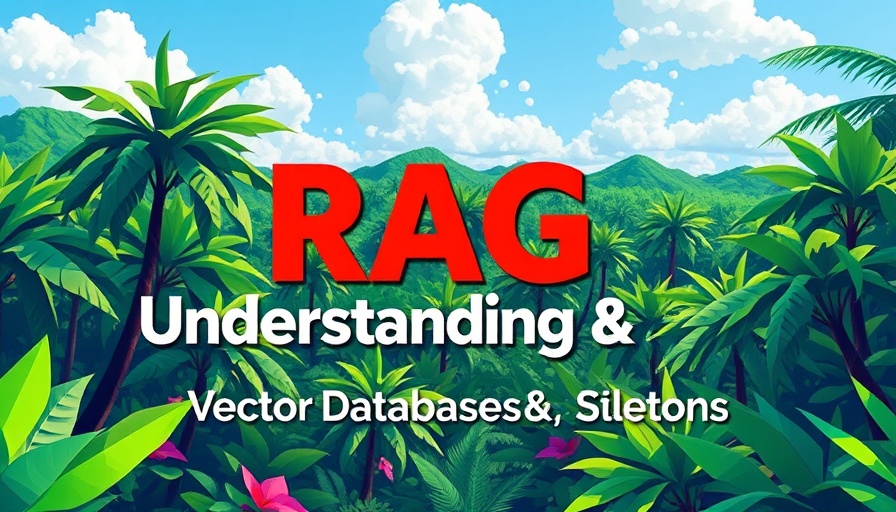
Unlocking the Power of RAG: Understanding Vector Databases and Indexing Strategies
As the world becomes increasingly data-driven, retrieving knowledge efficiently in systems like Retrieval-Augmented Generation (RAG) is essential for businesses looking to stay ahead. Today's technology allows us to navigate vast amounts of data; nonetheless, the effectiveness of this navigation often hinges on two pivotal components: vector databases and indexing strategies. This exploration aims to simplify these concepts and reveal their importance in ensuring accurate responses to user queries.
What are Vector Databases?
In a world inundated with information, vector databases emerge as specialized tools designed for the storage and retrieval of text represented as high-dimensional vectors. Unlike traditional databases that rely on structured data and keyword matching, vector databases facilitate semantic searches that allow for unstructured data retrieval. This means that documents with similar meanings can be grouped closely together in the database, enhancing retrieval efficiency.
Why Vector Representations Matter
Vector representations of documents enable RAG systems to conduct similarity-based searches, swiftly pulling relevant information based on user queries. For example, vectors associated with reviews of Mediterranean restaurants will cluster together, while those linked to a news article on classical music will be distinctly apart. Hence, leveraging vector databases significantly optimizes the search process.
Indexing Strategies: Your Guide to Efficient Retrieval
So how do RAG systems optimally retrieve information from these vector databases? The answer lies in clever indexing strategies. Much like a library catalog helps locate books quickly, indexing techniques directly enhance retrieval speed and accuracy. Here are several prominent strategies employed in RAG systems:
- Approximate Nearest Neighbors (ANN): A rapid approach favored for its efficiency, though it may sacrifice some accuracy in certain contexts.
- Hierarchical Navigable Small World (HNSW): Known for balancing speed and accuracy, this strategy organizes data in a complex multi-layer graph.
- IVF (Inverted File Index): Particularly useful in large-scale searches, this method divides high-dimensional vector space into clusters to expedite the retrieval process.
- Product Quantization (PQ): A more advanced technique that compresses vector data, helping to reduce memory use while ensuring efficient similarity searches.
Understanding Misconceptions in RAG
Despite the advancements in RAG systems, misconceptions remain prevalent. A common myth is that a larger vector database inherently leads to better retrieval. Conversely, it’s the relevance of the data and the efficacy of the indexing strategy that ultimately drive performance. An abundance of vectors can sometimes lead to "noise," complicating the information retrieval process.
Future Predictions: The Evolving Landscape of RAG
As businesses increasingly adopt RAG technologies, the demand for refined indexing strategies and vector databases will only grow. This evolution will likely bring about more sophisticated dynamic indexing methods and improved understanding of context within RAG systems. Consequently, adopting the right strategy—whether prioritizing multi-vector indexing for complex queries or parent document retrieval to maintain context—will become imperative for businesses aiming to leverage RAG systems effectively.
Taking Action: The Next Steps for Businesses
In an age where data responsiveness can set companies apart, it’s crucial for decision-makers—CEOs, marketing managers, and professionals within the tech realm—to grasp the importance of efficient data retrieval mechanisms. By understanding the capabilities of vector databases and the various indexing strategies at their disposal, they can better guide their organizations toward leveraging RAG systems for optimal organizational intelligence.
Stay informed, explore these technologies, and prepare to bolster your data strategies to enhance performance and efficiency in your operations.
 Add Row
Add Row  Add
Add 




 Add Row
Add Row  Add
Add 

Write A Comment